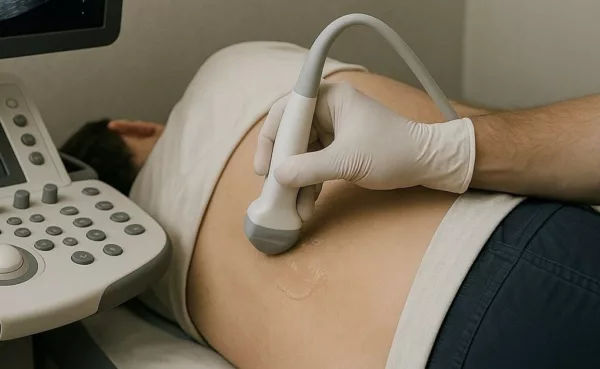Ultrasound innovation in urology: What’s new in 2025?
While molecular imaging and artificial intelligence (AI) are at the forefront of latest development in urological imaging, ultrasound remains the most accessible imaging tool in urology. Nevertheless, new technological advances in ultrasound have been developed, showing that further implementations of ultrasound in urological practice might happen in the next few years.
OPTIMUN trial
One of the most recent and relevant publications in urology has been the OPTIMUN trial, which was presented by Prof. Klotz at the EAU25 Congress in Madrid. More than 800 biopsy-naïve men were randomised to receive a targeted prostate biopsy on visible lesion detected at microUS (a high-frequency ultrasound probe with a 70-micron resolution) vs. those seen on an MRI, or a combination of the two imaging tools. A non-inferiority detection rate of the microUS was shown respect to MRI-driven diagnostic pathway in detecting clinically significant prostate cancer (ISUP ≥2). Accordingly, microUS is proposed as an alternative tool to MRI fusion biopsy, with the potential advantage of being a more accessible device that can easily be used by urologists.
PCaVision system
Currently, a new tool has been developed over the last few years and could improve the detection of prostate cancer. The PCaVision system by Angiogenesis Analytics is a computer-aided diagnostic tool that utilises 3D multiparametric transrectal ultrasound. It combines B Mode, elastography, and contrast-enhanced ultrasound to generate real-time heatmaps indicating regions suspicious for clinically significant prostate cancer. Soon, we will see the results of a prospective trial, biopsy naïve men undergo both mpMRI and PCaVision imaging, with randomised biopsy targeting where both methods detect lesions. The primary endpoint is noninferiority in the detection of clinically significant prostate cancer (ISUP ≥ 2), with a noninferiority margin set at 5 %. Secondary outcomes include diagnostic accuracy across lesion grades, rate of omitted biopsies, and image quality metrics.
OPTIMUM and PCaVision are trials that highlight the importance of personalised imaging strategies in prostate cancer biopsy. MRI remains a standard, but microUS has become a game changer in 2025 as a real-time, accessible, and efficient tool that can complement or substitute MRI in selected clinical settings, especially in hospitals with limited access to MRI. Maybe next year we will have a new system to improve our detection of clinically significant cancer.
Ultrasound remains our central practice routine
An educational milestone was reached in 2025, with the publication of the Atlas of Ultrasonography in Urology, Andrology, and Nephrology, edited by Dr. P. Martino and colleagues. This book provides a great overview of ultrasound applications across the genitourinary tract. Some chapters cover advanced tools such as elastography, contrast-enhanced ultrasound (CEUS), and image fusion. The atlas balances high-quality images with practical algorithms, making it ideal for both trainees and young specialists, who are initiating in the world of ultrasound, or maybe for senior urologist to have a kind bible in terms of ultrasound.
So, what is new in Urology? Despite the few numbers of high-impact publications in the last year, ultrasound remains our central practice routine. Its versatility, safety, and accessibility make it irreplaceable, especially in outpatient situations. The growing use of advanced ultrasound modalities, combined with training initiatives and AI, promises to expand its role in precision diagnostics.
At EMU25, the EAU Section of Urological Imaging will continue this conversation, with dedicated sessions on ultrasound innovation, real-time biopsy guidance, and practical AI applications for ultrasound-based workflows. Don’t miss the opportunity to rediscover the potential of ultrasound in daily clinical practice.
